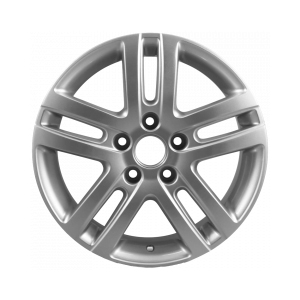axial face seal
Understanding Axial Face Seals A Comprehensive Overview
Axial face seals are critical components in various mechanical systems, particularly in machinery and equipment that require effective sealing solutions to prevent fluid leakage and contamination. These seals are designed to operate under axial loading conditions, meaning that the force is applied parallel to the surface of the seal face. This article aims to discuss the design, functionality, applications, and advantages of axial face seals, highlighting their importance in modern engineering.
What is an Axial Face Seal?
An axial face seal consists of two primary components a stationary part, typically fixed to the housing of the equipment, and a rotating part, which is connected to the shaft. The sealing surfaces are oriented perpendicular to the radial direction, and they work together to create a reliable barrier against the escape of fluids. The interface between the two surfaces is where the sealing action occurs, preventing the leakage of lubricants or other fluids while also keeping contaminants from entering the system.
Design and Materials
The design of axial face seals can vary based on the specific application and operating conditions. Key design considerations include the sealing surface finish, the material selection, and the operating temperature and pressure ranges. Materials used for axial face seals include elastomers, plastics, and ceramics, which provide the necessary resilience and durability. For instance, fluorocarbon elastomers are often utilized in environments with extreme temperatures and chemical exposure due to their excellent resistance to degradation.
Working Principle
The basic working principle of axial face seals relies on the contact between the stationary and rotating sealing surfaces. When the shaft rotates, the face seal must maintain constant contact while compensating for any axial movements or vibrations. This is achieved through the application of a spring mechanism that exerts a continuous force on the seal faces, ensuring a tight sealing interface. The effectiveness of this sealing action is critical; a proper balance needs to be struck between sufficient contact pressure to prevent leakage and minimal friction that can lead to wear and increased energy consumption.
axial face seal

Applications
Axial face seals are used in a wide range of applications across various industries. They can be found in automotive systems, such as engine components and transmission systems, as well as in aerospace applications, hydraulic systems, pumps, and compressors. In both industrial and consumer products, the reliability of axial face seals significantly influences the overall performance and longevity of machinery. For instance, in automotive engines, these seals play a vital role in preventing oil leaks, which can lead to diminished efficiency and potential engine damage.
Advantages of Axial Face Seals
One of the primary advantages of axial face seals is their ability to maintain an effective seal under high-pressure conditions while minimizing wear on the seal faces. This is particularly important in dynamic applications where traditional seals might fail due to excessive friction or heat buildup. Additionally, axial face seals can be customized to suit specific operational needs, including variations in temperature, pressure, and chemical exposure.
Moreover, axial face seals are designed to be self-adjusting to a certain degree, thanks to their spring-loaded mechanisms. This self-adjustment helps maintain optimal sealing performance throughout the operating life of the seal, reducing the need for regular maintenance or replacement.
Conclusion
In summary, axial face seals are indispensable components in many mechanical systems, offering excellent sealing solutions that enhance the performance and reliability of machinery. Their unique design allows them to operate effectively under diverse conditions, making them a preferred choice in numerous industrial and automotive applications. As technology continues to advance, the ongoing development of materials and manufacturing techniques will likely lead to even more efficient and durable axial face seals, further cementing their role in modern engineering and machinery reliability. Understanding and utilizing these seals effectively can lead to improved operational efficiency, reduced maintenance costs, and a longer service life for the equipment they protect.
-
Simplifying Oil Changes: A Comprehensive Guide to Oil Drain Plugs and Their Variants
News Aug.04,2025
-
Mastering Oil Drain Maintenance: Solutions for Stripped, Worn, and Upgraded Oil Plugs
News Aug.04,2025
-
Fixing Oil Pan Plug Issues: Leaks, Stripped Nuts, and the Right Replacement Solutions
News Aug.04,2025
-
Everything You Need to Know About Oil Drain Plugs: Sizes, Fixes, and Upgrades
News Aug.04,2025
-
Choosing the Right Oil Drain Plug: A Guide to Sizes, Materials, and Drain Innovations
News Aug.04,2025
-
A Complete Guide to Automotive Drain Plugs: Types, Problems, and Innovative Solutions
News Aug.04,2025
-
The Ultimate Guide to Car Repair Kits: Tools and Essentials Every Driver Should Own
News Aug.01,2025
Products categories















